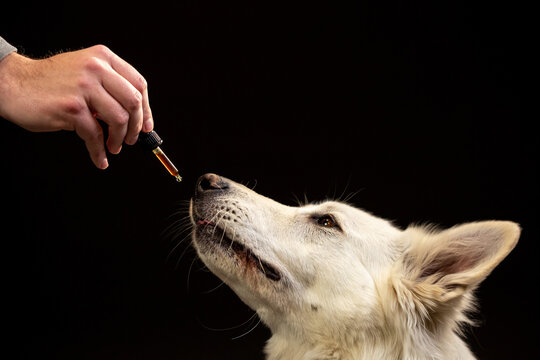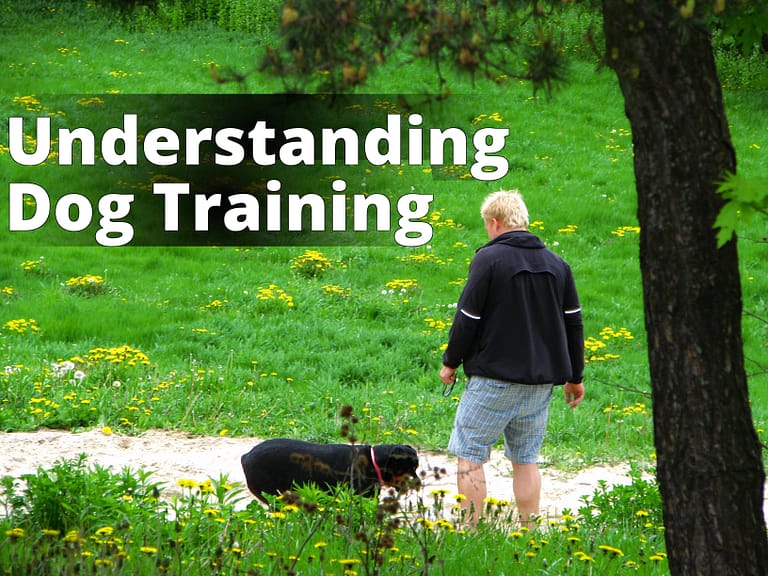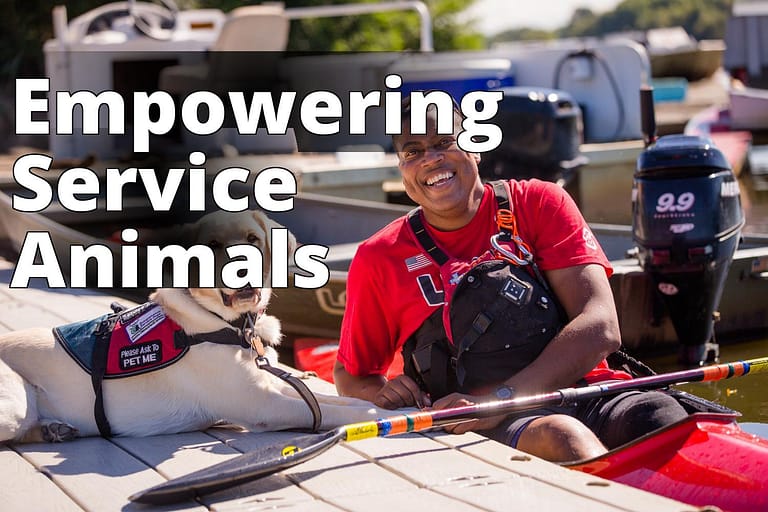From Pet to Service Companion: The Complete Training Guide to Make Your Dog a Service Dog
Service dogs play a crucial role in the lives of individuals with disabilities or special needs. These highly trained dogs provide assistance and support in various ways, enabling their handlers to lead more independent and fulfilling lives. The benefits of having a service dog extend far beyond companionship, as they can significantly improve the quality of life for their handlers.
A well-trained service dog can assist with a wide range of tasks, depending on the individual’s needs. For example, a service dog may be trained to provide mobility assistance, such as helping their handler navigate stairs, retrieve objects, or open doors. They can also be trained to alert their handler to specific sounds or smells, such as a fire alarm or an oncoming seizure. Additionally, service dogs can offer emotional support, providing comfort and reassurance during times of anxiety or distress.
Summary
- This article covers the complete training guide to make your dog a service dog.
- It discusses the benefits of having a service dog, the role of a service dog, assessing your dog’s suitability, consulting with a professional, basic obedience training, specialized training, public access training, legal documentation and registration, health and well-being, and continuing education and maintenance.
- It emphasizes the importance of proper training, dedication, and patience in making your dog a service dog and highlights the positive impact it can have on individuals with disabilities or special needs.

Understanding the Role of a Service Dog
Service dogs are not just pets; they are working animals with specific responsibilities. These dogs are trained to perform tasks that mitigate their handler’s disability or special needs. The tasks they perform can vary greatly, depending on the individual’s requirements. It is important to understand the different roles that service dogs can fulfill and the legal rights and protections they possess.
In many countries, service dogs and their handlers are granted legal rights to access public places and housing accommodations. This means that service dogs are allowed to accompany their handlers in places such as restaurants, stores, and public transportation. These legal protections ensure that individuals with disabilities can fully participate in society and live with greater independence.

Assessing Your Dog’s Suitability
Not all dogs are suitable for becoming service dogs. To determine if your dog has the potential to become a service dog, you need to assess their qualities and traits. A service dog should have a good temperament, be highly trainable, and physically fit to perform the tasks required of them.
Temperament is a crucial factor in determining a dog’s suitability for service dog work. Service dogs need to be calm, patient, and reliable in various situations. They should be able to remain focused on their handler and perform their tasks without being easily distracted. A dog with a friendly and sociable nature is also important, as they will often interact with the public.
Trainability is another essential aspect to consider. A service dog must be able to learn and retain complex commands and tasks. They should be responsive to their handler’s cues and be able to work reliably in different environments. Intelligence, eagerness to learn, and a strong desire to please their handler are qualities that make a dog more trainable.
Physical fitness is also a crucial consideration. Service dogs may need to perform tasks that require strength, endurance, or agility. For example, a mobility assistance dog may need to help their handler with balance or provide stability during walking. It is important to ensure that your dog is physically capable of performing these tasks without causing harm to themselves or their handler.
Consulting with a Professional
Consulting with a professional service dog trainer or an organization specializing in service dog training is highly recommended when considering making your dog a service dog. These professionals have the knowledge and expertise to assess your dog’s potential as a service dog and guide you through the necessary steps.
A professional trainer can evaluate your dog’s temperament, trainability, and physical capabilities. They can provide valuable insights into whether your dog is suited for service dog work or if there are any areas that need improvement. They can also offer guidance on the specific training techniques and tasks that would be most beneficial for your dog and their potential handler.
Working with a reputable service dog organization is another option to consider. These organizations often have established training programs and resources to assist individuals in the process of making their dog a service dog. They can provide structured training programs, certification, and ongoing support to ensure the success of the service dog-handler partnership.

Basic Obedience Training
Before embarking on specialized service dog training, it is essential to establish a solid foundation of basic obedience training. Basic obedience training lays the groundwork for further specialized training and helps build a strong bond and trust between you and your dog.
Start with teaching your dog essential commands such as sit, stay, down, come, and walking on a leash. These commands form the basis of communication between you and your dog and are essential for maintaining control and ensuring their safety in various situations. Use positive reinforcement techniques, such as rewards and praise, to motivate and encourage your dog during training sessions.
Consistency is key when it comes to basic obedience training. Practice these commands regularly in different environments and gradually increase the level of distractions. This will help your dog generalize their obedience skills and learn to respond reliably even in challenging situations.
| Basic Obedience Training | Specialized Training |
|---|---|
| Teach essential commands such as sit, stay, down, come, and walking on a leash. | Focus on teaching specific tasks related to the disability or special needs of the individual. |
| Use positive reinforcement techniques like rewards and praise. | Work with a professional trainer experienced in service dog training. |
| Practice commands regularly in different environments and gradually increase distractions. | Develop a training plan tailored to the specific needs of the handler. |
| Consistency and repetition are key to reinforcing commands. | Use positive reinforcement techniques throughout specialized training. |
| Lay the groundwork for further specialized training and bond with your dog. | Reward your dog for successfully performing tasks. |
Specialized Training
Once your dog has mastered basic obedience commands, it is time to move on to specialized training. This training focuses on teaching your dog the specific tasks related to the disability or special needs of the individual they will be assisting.
Work with a professional trainer who has experience in service dog training to ensure that your dog receives appropriate and effective training. The trainer will assess the specific needs of the handler and develop a training plan tailored to those needs. They will guide you through the process of teaching your dog tasks such as retrieving objects, opening doors, alerting to sounds or smells, or providing stability.
Positive reinforcement techniques should be used throughout specialized training. Reward your dog with treats, praise, or play for successfully performing the desired tasks. Consistency and repetition are essential in reinforcing these tasks and ensuring that your dog can reliably perform them when needed.

Public Access Training
Public access training is a critical component of service dog training. This training prepares your dog to remain calm, well-behaved, and focused on their handler while in public places. It teaches them to navigate various environments and distractions without losing focus or becoming reactive.
Expose your dog to different public spaces, such as shopping centers, parks, or public transportation, gradually increasing the level of distractions. Practice obedience commands and specialized tasks in these real-life settings to ensure that your dog can perform reliably in public situations.
During public access training, it is important to remember the legal rights and responsibilities associated with having a service dog. Familiarize yourself with the specific laws and regulations in your country or region regarding service dogs. Understand the difference between a service dog, an emotional support animal, and a therapy dog, as the rules and regulations may vary.
Case Study: How a Service Dog Transformed John’s Life
John, a military veteran, was struggling with post-traumatic stress disorder (PTSD) after returning from active duty. He found it challenging to navigate everyday life, with anxiety and panic attacks frequently hindering his ability to leave his home.
After researching the benefits of having a service dog, John decided to explore the possibility of getting one to help him with his condition. He consulted with a professional service dog trainer who evaluated his needs and recommended a suitable dog for him.
John’s journey began with basic obedience training. He and his new service dog, Max, learned essential commands such as sit, stay, and come. Through this process, a strong bond formed between them, creating a foundation for further specialized training.
Under the guidance of his trainer, John and Max proceeded to specialized training. Max was taught tasks specifically tailored to John’s condition, such as providing deep pressure therapy during panic attacks, alerting to signs of anxiety, and creating a physical barrier in crowded spaces.
The public access training phase was crucial for John and Max. They practiced obedience commands and specialized tasks in various real-life settings, including busy shopping malls, restaurants, and public transportation. Max learned to remain calm and focused on John, ensuring his ability to perform reliably in any public situation.
Once the training was complete, John and Max underwent the necessary legal documentation and registration process to certify Max as a service dog. This step provided John with the legal rights and protections granted to service dog handlers, allowing them to access public places and housing accommodations without any restrictions.
Max’s presence has had a profound impact on John’s life. With his service dog by his side, John feels more confident and secure when facing challenging situations. Max’s companionship and ability to perform specialized tasks have significantly reduced the frequency and severity of John’s symptoms, improving his overall quality of life.
John understands that training and learning are ongoing processes, and he continues to attend refresher training sessions to enhance Max’s skills and maintain his training proficiency. The journey of transforming Max from a pet into a service dog has been life-changing for John, providing him with the independence, companionship, and support he needed to overcome the challenges of living with PTSD.
Legal Documentation and Registration
Research the legal requirements and documentation needed to register your dog as a service dog in your country or region. Each jurisdiction may have different regulations regarding the certification and identification of service dogs.
In some cases, service dog handlers may need to provide specific documentation from a healthcare professional or a professional service dog trainer. This documentation may include details about the handler’s disability or special needs and the tasks that the service dog has been trained to perform.
It is important to note that while certification and registration may not be legally required in all jurisdictions, having proper identification and documentation can help ensure a smooth experience when accessing public places or dealing with potential conflicts or misunderstandings.

Health and Well-being
The health and well-being of your service dog are of utmost importance. Regular veterinary care, vaccinations, and proper nutrition are essential to maintain their overall health. Ensure that your dog receives routine check-ups, vaccinations, and preventive treatments as recommended by your veterinarian.
In addition to physical health, mental stimulation, exercise, and socialization are vital for your service dog’s well-being. Engage your dog in activities that challenge their mind and provide physical exercise. Regular walks, playtime, and interactive toys can help keep them mentally and physically fit.
Grooming and hygiene are also important aspects of maintaining your service dog’s well-being. Regularly brush their coat, clean their ears, trim their nails, and brush their teeth. A clean and well-groomed dog not only looks presentable in public but also contributes to their overall health and comfort.
Continuing Education and Maintenance
Service dog training is an ongoing process that requires continuous learning and maintenance. As a handler, it is important to stay updated on new techniques, laws, and best practices in service dog training. Attend workshops, seminars, or participate in online resources to enhance your knowledge and skills.
Refresher training sessions or advanced training




Leave a Reply